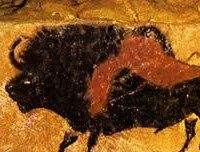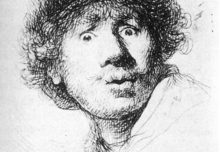Art movement?

You mean dancing or something like that? No!
‘An art movement is a tendency or style in art with a specific common philosophy or goal, followed by a group of artists during a specific period of time… ‘ Wikepedia
It is a way of describing artist’s work by classifying their art into groups. Work that is usually created at a similar moment in art history, and where the artists seem to have inspired and influenced each other.
Typical examples would be ‘Impressionism’ or ‘Dada’ or ‘Abstract Expressionism’.
There are dozens of western art movements that have similar group characteristics.
Others do not. For instance Naïve Art , Folk Art, or Cloisonnism describe styles of making art that would have been created by an artist working alone. Maybe he or she would not even be aware that they are part of an art movement.
‘Britart’ is another example of an ‘art movement’.
‘YBAs (also Brit artists and Britart) is the name given to a group of conceptual artists, painters, sculptors and installation artists based in the United Kingdom, most (though not all) of whom attended Goldsmiths College in London.’
One of the most obvious things about Britart is that the art is aimed primarily at, and eventually appreciated by, the art establishment.
In a previous blog about Damien Hirst I mentioned that he was a ‘Young British Artist’. These are also known as a ‘Britart’ artists.
Art pieces like dead animals in tanks of formaldehyde by DH, or the unmade bed by Tracey Emin, are not made for everyday ordinary people to have in their everyday ordinary homes.
Instead YBA’s enjoyed shocking the establishment and attracting media attention to the British art scene. The London art colleges and London art galleries achieved international attention. Art galleries all around the world sought an example because their visitors were intrigued by the new concept.
DH became a sought after artist where your money would be well invested. His large tanks of floating dead animals with funny titles were instantly recognized. No one had done anything like it before.
Conclusion.
We must be aware, and beware, that media attention, establishment status, and dealer profit potential are factors in the recognition of a new ‘art movement’.
Maybe this is too cynical. All those things can be good as well as bad.
Let history tell us.
*************************************************************************




